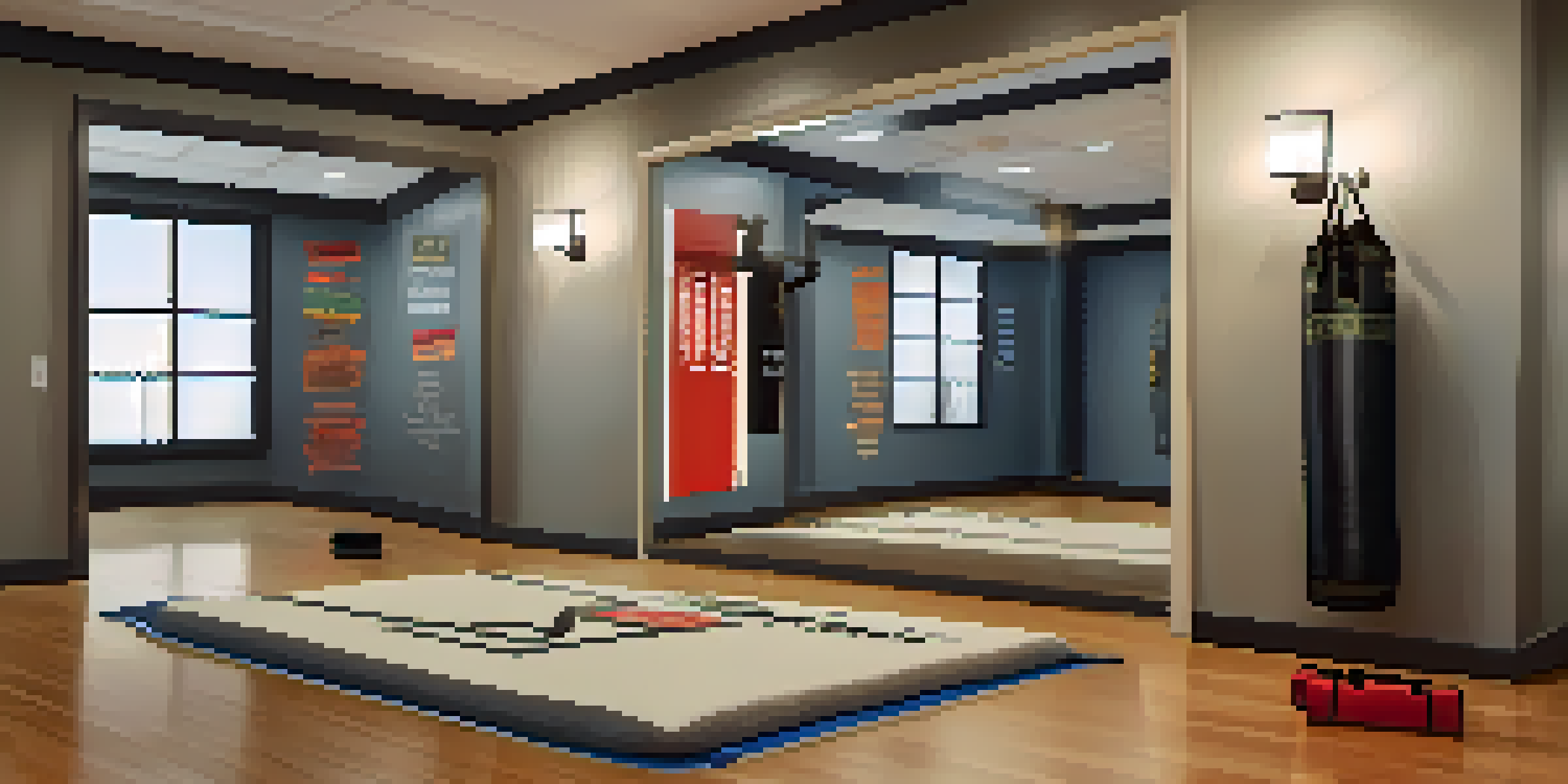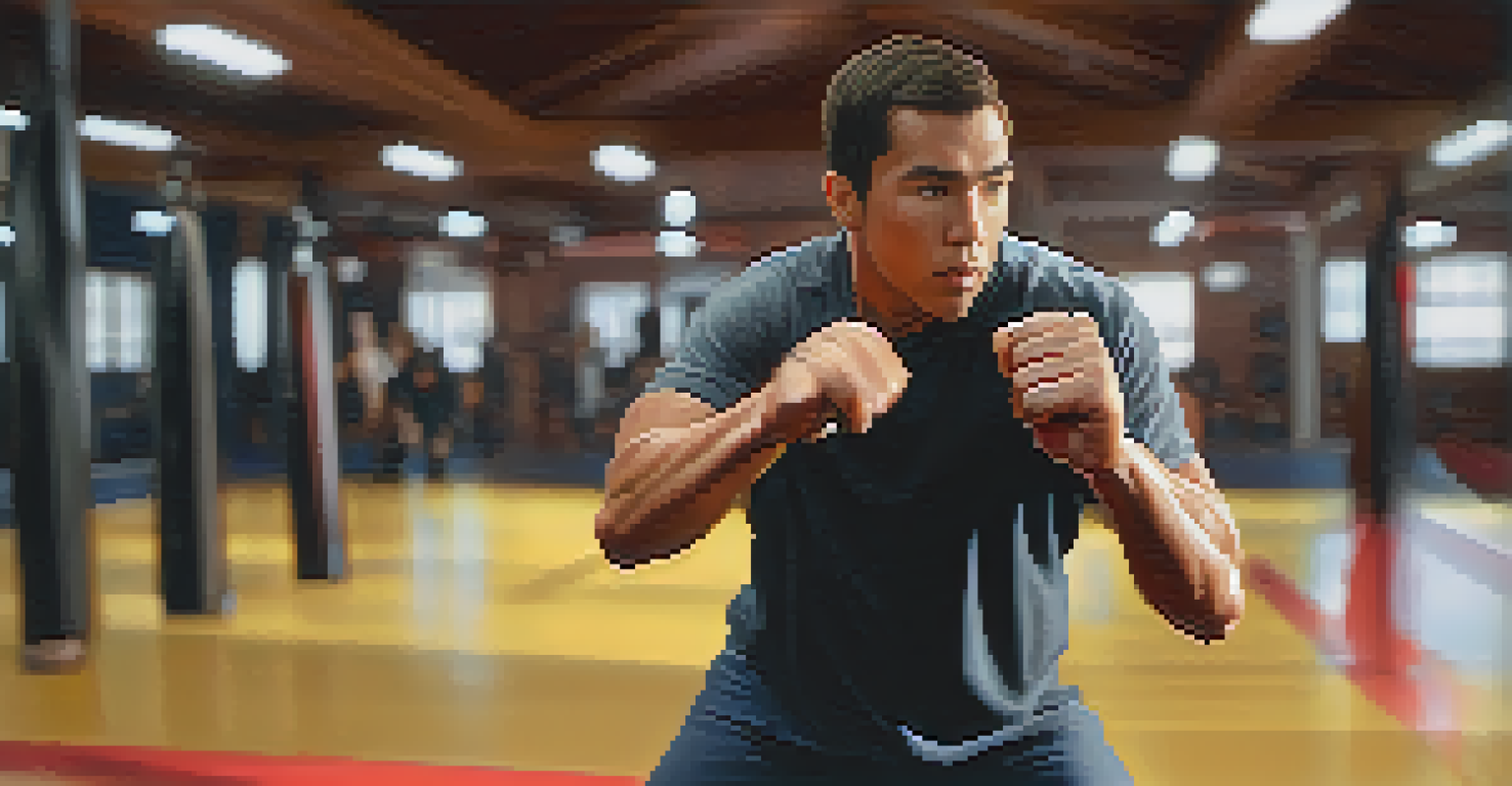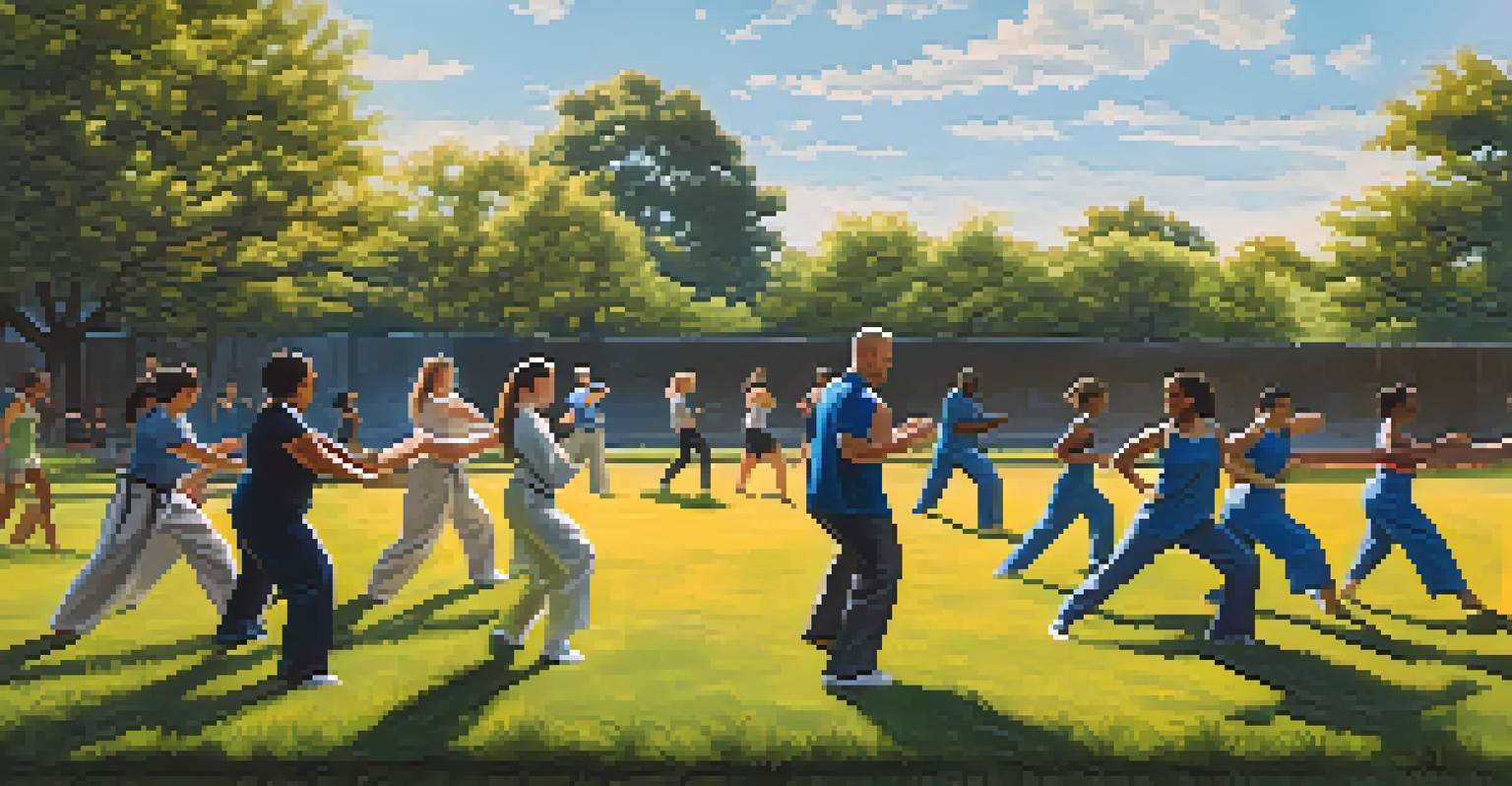Basic Self Defense Moves Everyone Should Practice at Home

Understanding the Importance of Self Defense Training
Self-defense isn't just about physical moves; it's about confidence and awareness. Knowing basic self-defense can empower you to feel safer and more in control in various situations. This training can also help you react calmly and effectively during unexpected encounters.
The best defense is a good offense.
Moreover, self-defense training promotes physical fitness. Many techniques require strength, agility, and coordination, which can improve your overall health. Practicing these moves regularly can make you feel stronger both physically and mentally.
Ultimately, understanding self-defense encourages a proactive mindset. Instead of being passive, you learn to assess your surroundings and recognize potential threats. This awareness is a crucial skill that benefits everyone in their daily lives.
Basic Stance: The Foundation of Self Defense
Before diving into specific moves, it’s essential to master a basic defensive stance. Stand with your feet shoulder-width apart, knees slightly bent, and keep your hands up at face level. This position provides balance and readiness, allowing you to react quickly if needed.

Think of your stance as the anchor in a storm. Just as a ship needs a strong anchor to withstand rough waters, you need a solid stance to maintain control. This foundational position helps you feel grounded and prepared for any situation.
Self-Defense Empowers and Protects
Understanding self-defense builds confidence, awareness, and physical fitness, enabling individuals to feel safer in various situations.
Practicing your stance regularly will build muscle memory. The more comfortable you become in this position, the quicker you'll be able to respond to potential threats. Remember, confidence starts with how you carry yourself.
Effective Escapes from Grabs and Holds
One of the most common scenarios in self-defense is being grabbed. Learning how to escape from a wrist grab can be incredibly useful. To do this, rotate your wrist toward the attacker’s thumb while stepping back to create distance.
In a crisis, the only thing you can do is to keep your head about you.
Imagine you're trying to free yourself from a tight hug—twisting away is often the best approach. This escape technique not only frees you but also allows you to reposition yourself for further action, whether it’s fleeing or countering.
Practicing this move helps build your confidence when facing a grab. The more you practice, the more instinctive the escape becomes, enabling you to react swiftly in real-life situations.
Simple Strikes: Punches and Palm Heels
In self-defense, knowing how to deliver a strong strike is crucial. Basic punches and palm heel strikes are effective techniques that anyone can master with a bit of practice. Focus on targeting vulnerable areas like the nose or jaw for maximum impact.
Think of your fist as a tool to break barriers. Just like a hammer can drive a nail, your strikes can create an opening for escape. Remember to keep your wrists straight to avoid injury while delivering these moves.
Master Your Basic Stance
A solid defensive stance serves as the foundation for effective self-defense, providing balance and readiness to respond to threats.
Regular practice of these strikes can enhance your strength and accuracy. Pairing strikes with your defensive stance will prepare you to respond effectively if confronted, making you feel more empowered in defending yourself.
Kicks: Using Your Legs for Defense
Kicks are powerful self-defense tools that can create distance between you and an attacker. Front kicks are particularly effective; simply lift your knee and extend your foot toward the target. Remember to aim for vulnerable areas such as the groin or knees.
Think of your legs as a shield. Just as a knight would raise their shield to fend off an attack, you can use kicks to protect yourself. Practicing these moves helps improve your balance and coordination, making them easier to execute when it counts.
Incorporating kicks into your routine also builds your lower body strength. The more you practice, the more confident you'll be in using your legs as a means of self-defense, adding another layer to your skill set.
Defensive Techniques Against Chokes
Choke holds are serious threats, but knowing how to defend against them can save you. If someone attempts a choke, the first step is to protect your airways by tucking your chin down. Use your hands to pry the attacker's grip away while stepping to the side.
Think of this as maneuvering out of a tight spot. Just like slipping out of a crowded room, the goal is to create space and freedom. This technique not only helps you escape but also allows you to reposition yourself for a follow-up action.
Mental Preparedness is Key
Combining physical techniques with mental readiness, such as visualization and situational awareness, enhances overall self-defense skills.
Practicing these techniques can significantly enhance your reaction time. The key is to remain calm and focused, as panic can impede your ability to respond effectively. Regular drills can instill a sense of confidence in your ability to handle such situations.
The Importance of Mental Preparedness
While physical techniques are vital, mental preparedness is equally important in self-defense. Visualization can be a powerful tool; imagine scenarios where you might need to defend yourself and mentally rehearse your responses. This mental practice can make your reactions more instinctive.
Consider mental preparedness like training for a marathon. Just as runners visualize crossing the finish line, you can picture yourself successfully navigating a threatening situation. This positive reinforcement helps build confidence and readiness.

Staying aware of your surroundings is another crucial aspect. Learning to trust your instincts and recognizing potential dangers can help you avoid confrontations altogether. The combination of mental and physical training creates a holistic approach to self-defense.
Creating a Safe Practice Environment at Home
To effectively practice self-defense moves at home, it's essential to create a safe and open space. Choose an area free from obstacles where you can move freely without risking injury. Clear furniture and any other hazards to ensure a comfortable training environment.
Think of this space as your personal dojo. Just as martial artists have designated training areas, having a safe practice spot allows you to focus without distractions. This dedicated space can motivate you to practice regularly and improve your skills.
Incorporating a mirror can also be beneficial. Practicing in front of a mirror allows you to observe your form and make adjustments as needed. This self-feedback can enhance your technique and boost your confidence in executing self-defense moves.